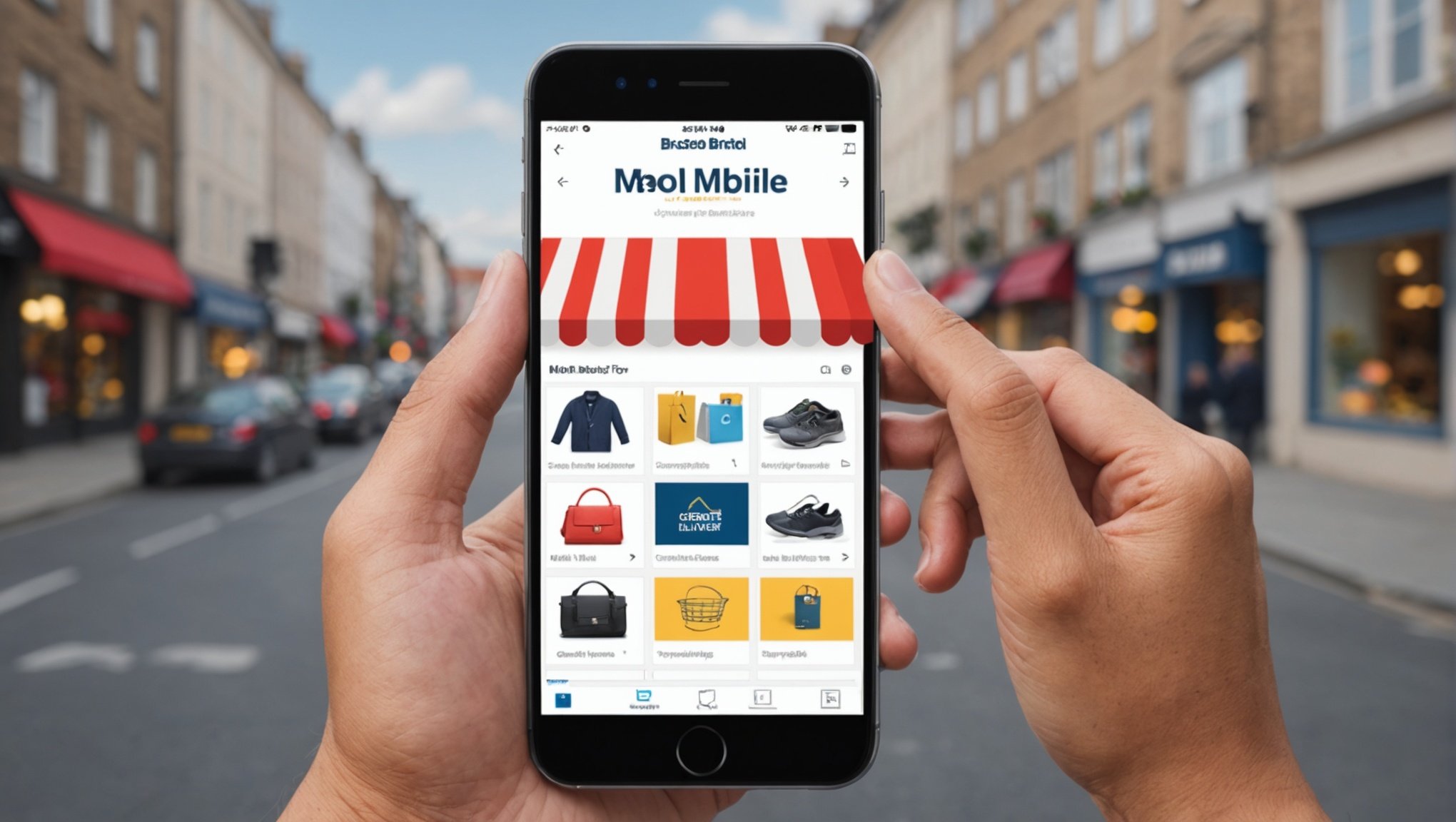Understanding Mobile Optimization
In today’s digital landscape, mobile optimization is crucial for businesses, especially in ecommerce. It refers to designing and adjusting websites to ensure they function effectively on mobile devices. This process not only enhances the website’s functionality but also significantly improves the user experience.
When a website is optimized for mobile, it responds seamlessly to the diverse range of devices, including smartphones and tablets. This is where the importance of responsive design becomes evident. Responsive design allows your website to automatically reformat its content to fit different screen sizes, ensuring that users have a smooth and accessible browsing experience regardless of the device they’re using.
Also read : Discover budget-friendly self storage solutions in glasgow now
The impact of user experience on sales conversion rates is profound. A well-optimized mobile site loads quickly, is easy to navigate, and is visually appealing. When users can effortlessly find what they’re looking for, they are more likely to complete a purchase, thereby increasing sales conversion rates. On the flip side, a poorly optimized site can frustrate users, leading to high bounce rates and lost sales opportunities.
Ultimately, prioritizing mobile optimization is not just about keeping up with trends; it’s about meeting the evolving needs of consumers and creating a seamless ecommerce journey.
In the same genre : Top Strategies for London Hotels to Navigate and Overcome Negative Publicity
Key Design Elements for Mobile-Ecommerce
In the mobile commerce realm, mobile design involves crafting experiences that cater to users on their smartphones.
Simplified Navigation
User Interface design requires streamlined navigation to enhance accessibility. By implementing intuitive menus, users can quickly find products and complete purchases with minimal clicks. This design considers mobile users’ need for efficiency due to the inherently smaller screen. Utilising collapsible menus and clear icons can greatly improve the shopping experience.
Visual Hierarchy
Graphic Design plays a crucial role in establishing a strong visual hierarchy. This ensures that important information, like sale offers or featured products, are immediately noticed. Deploying different font sizes, colours, and spacing effectively guides users through their browsing, naturally leading them from awareness to conversion. This prioritization makes sure key elements have emphasis, supporting the user’s journey.
Touch-Friendly Elements
Designing for touch-friendly use involves creating larger buttons and easily accessible interactive elements. These aspects enhance usability, ensuring every tap results in the desired action. By focusing on touch-friendly dynamics, users enjoy a seamless shopping experience, which minimizes frustration and maximizes engagement. Considering factors like button size and spacing is integral to mobile design, accommodating the diverse spectrum of screen sizes and user preferences.
Ensuring Fast Loading Times
Optimizing page speed is crucial to maintaining user retention. Quick loading times are directly linked to lower bounce rates—users are less likely to abandon a site if it loads promptly. A delay of just a few seconds can deter a user, causing them to seek faster alternatives.
Tools and Techniques
To assess your website’s page speed, a variety of tools are available. Google PageSpeed Insights and GTmetrix are popular options that provide thorough analysis and actionable insights. They can highlight areas for improvement, such as unoptimized images or excessive resource loading, which contribute to sluggish pages.
Best Practices
Effective image compression is a straightforward step to enhance loading times. Utilize formats like JPEG, PNG, or WEBP and adjust quality settings to balance load speed and image fidelity. Additionally, the use of asynchronous resource loading ensures that vital content becomes visible rapidly, even before all secondary elements fully load.
Maintaining competitive page speed is non-negotiable in today’s digital landscape. By leveraging these strategies and tools, website owners can cater to user expectations efficiently, securing better user retention and reducing bounce rates.
Effective Navigation Strategies
Achieving a seamless user journey is crucial in optimising any digital platform. To enhance this experience, thoughtful navigation strategies are essential. This involves ensuring that every user can effortlessly find what they are looking for.
Streamlining Menus
An intuitive menu design is the backbone of effective navigation. On mobile devices, simplicity is key. Techniques like collapsible or expandable menus can maximise space without overwhelming the user. The idea is to keep the design clean yet comprehensive—layering information in such a way that users can dive deeper as needed rather than presenting them with a cluttered homepage.
Search Functionality
A robust search feature is indispensable in ecommerce. Users often come with a specific product or service in mind, so implementing an efficient search bar using natural language recognition can greatly enhance their journey. Predictive text and auto-suggestions further refine this experience, ensuring users quickly find relevant results.
Filter and Sort Options
When users browse through extensive catalogs, filters and sorting options become invaluable. By providing users with tools to narrow down choices based on criteria like price, size, or popularity, the shopping experience becomes significantly more personalised. These features empower users to tailor their search, ultimately enriching their interaction with the platform.
Mobile SEO Best Practices
Mobile SEO has become crucial as more users access the internet via mobile devices. The main difference between mobile SEO and desktop SEO lies in screen size and user experience. Ensuring optimal visibility on search engines is pivotal, as mobile searches often prioritize different factors than desktop searches.
One significant difference is the emphasis on local SEO, particularly vital for Bristol businesses. Mobile users frequently search for nearby services, so optimizing for local search engine results pages (SERP) can significantly enhance your business’s reach. Including your business address, contact details, and relevant local keywords can further improve visibility.
Key practices for mobile optimization include:
- Responsive Design: Ensures your website displays properly on all devices.
- Fast Loading Times: Critical for user retention; mobile users tend to abandon slow sites.
- Mobile-friendly Content: Simplify navigation and avoid large images or excessive text that could affect readability.
Another essential aspect is tailoring your content. Use shorter paragraphs and clear headings, since mobile users favour quick access to information. Integrating these mobile SEO strategies can greatly improve your site’s visibility on mobile SERPs, enhancing your overall online presence.
Case Studies of Local Bristol Businesses
To explore local success stories in Bristol, we delve into examples of ecommerce examples where businesses have effectively improved their mobile presence. Through detailed case studies, we highlight not just what they did, but the transformative impact on their businesses.
Successful Mobile Optimization Stories
Several local businesses in Bristol have embraced mobile optimization to enhance user experience. An exceptional case is a local bakery that revamped its mobile interface, leading to a significant increase in online orders. They employed strategies such as simplifying navigation and speeding up page load times. The bakery observed a 40% rise in mobile traffic and a 25% boost in sales post-optimization.
Lessons Learned from Local Businesses
Studying these case studies offers valuable insights into effective strategies. Key lessons include the importance of mobile-friendly design and prioritising user experience. Simple features, like easy access to product details and seamless checkout processes, have proven essential for mobile ecommerce success.
Before and After Comparisons
Witnessing the before and after comparisons of these ecommerce examples provides insight into the profound impact of strategic changes. Visual data, like website heatmaps, show marked improvement in user engagement and conversion rates. Such tangible benefits spotlight the pivotal role of mobile optimization for local success.
Tools and Resources for Mobile Optimization
In today’s rapidly evolving technology landscape, optimizing mobile sites is imperative for ecommerce success. To facilitate this, numerous mobile tools are available to test and optimize websites effectively. These tools range from user-friendly platforms like Google’s Mobile-Friendly Test, which assesses a site’s compatibility with mobile devices, to more advanced solutions like PageSpeed Insights, which offers in-depth analysis on speed and performance. By leveraging these tools, businesses can ensure their mobile sites are not only functional but efficient.
Alongside these testing tools, there are numerous optimization resources dedicated to keeping businesses informed of the latest mobile trends. Websites such as Smashing Magazine and blogs like Shopify’s ecommerce insights provide up-to-date information and case studies on effective mobile strategies. These resources are critical in a digital environment where trends shift rapidly and customer expectations continuously evolve.
It’s essential to underline the importance of continuous learning and adaptation in ecommerce. As technology advances, so do the parameters for mobile optimization. By consistently utilizing these tools and resources, businesses can maintain a competitive edge, ensuring their mobile sites are always optimized to meet the latest standards and user expectations.
Local Market Considerations for Bristol
Understanding the Bristol Market is essential for businesses looking to thrive in this vibrant city. It’s important to consider local trends and user behaviour to craft effective strategies. Let’s delve into these considerations.
Understanding Local User Preferences
In Bristol, consumers exhibit unique preferences that reflect the city’s distinct character. A notable trend is the preference for sustainable and ethical brands. As a hub of innovation, Bristol’s consumers are also inclined towards technological advancements, presenting an opportunity for businesses to integrate technology into their offerings. Monitoring these trends and adapting strategies accordingly is key to serving Bristol’s discerning audience.
Tailored Marketing Strategies
Successful businesses tailor their marketing strategies to resonate with local audiences. In Bristol, showcasing the authenticity and values of your brand can significantly enhance consumer relationships. Utilize local imagery and dialect in campaigns to create a familiar and relatable message. It’s crucial to align offerings with the values important to Bristol consumers, like eco-friendliness and technological innovation.
Community Engagement
Community engagement plays a pivotal role in the Bristol Market. Establishing a presence at local events or partnerships with Bristol-based organisations can cement a brand’s authenticity and value to local consumers. Engaging with community initiatives fosters goodwill and builds strong connections with potential clients, ultimately boosting e-commerce success through local support.











